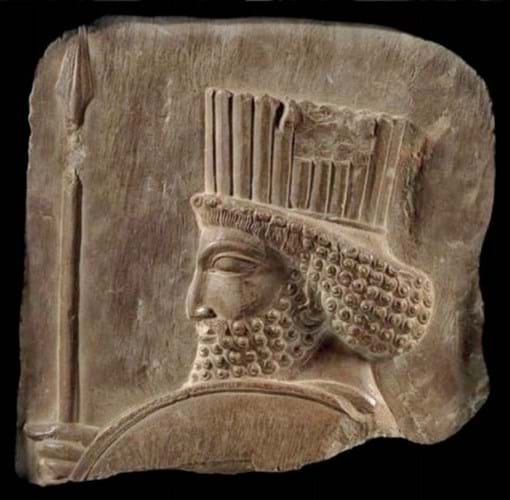
Antiquities trade bodies say that US state demands for a Persian limestone relief to be returned to Iran are part of a ‘witch hunt’ causing ‘fear and concern’ among dealers.
The District Attorney of New York filed a claim on May 24 with the state’s Supreme Court calling for the return of the relief to Iran, on the grounds that it was looted from the country in the 1930s.
The DA’s office is leading a crackdown on antiquities, which it says are linked to terrorist financing. It recently launched a counter antiquities trafficking unit led by assistant district attorney Colonel Matthew Bogdanos.
Seized at TEFAF
The Persian relief, of a guard from the ancient city of Persepolis, is under investigation by the DA’s office after it seized the object from the stand of Rupert Wace Ancient Art at TEFAF New York in October 2017 (ATG No 2316).
It had been on display in the Quebec National Museum from the 1950s to 2011.
Wace and London dealer Sam Fogg purchased the relief from insurance company AXA ART in 2016, after it was stolen from the museum in 2011. Once recovered, the museum decided to keep the insurance money rather than have the object returned, at which point the relief was sold to the dealers.
The DA’s office alleges that Wace and Fogg did not do enough due diligence beforehand, something the dealers deny. Contacted by ATG, Wace, Fogg and Wace’s lawyer Pierre Valentin, partner at Constantine Cannon, declined to comment.
Speaking to ATG last week, Vincent Geerling, chairman of the International Association of Dealers in Ancient Art (IADAA), said: “It is a witch hunt. We are talking about an object on display for 60 years in a public museum.”
Geerling added: “If this case is successful it will be disastrous for museums, collectors and the trade.”
Joanna van der Lande, chairman of the Antiquities Dealers’ Association (ADA), said the crackdown by the attorney’s office “is damaging the art market in New York and is creating fear and concern”.
Due diligence
Geerling said: “The due diligence required of a dealer should be proportionate for the object. Rupert Wace and Sam Fogg had done more than can be expected.
“But they cannot hire half a police force and spend six months researching an object, like Bogdanos has. That is just not possible.”
Wace has requested reimbursement from AXA following the seizure and AXA is now pursuing a court ruling in Canada to secure title to the antiquity, to prove it was legal to have sold it to Wace.
Nicholas Brett, chief executive of AXA ART, told ATG that it is aware of the motion by the attorney’s office.
He said: “AXA ART is not a party to the motion or the proceedings in New York but [we are] involved in proceedings in Canada.”
"Collateral damage"
Following the filing of the claim in New York, Bogdanos spoke at a workshop in Brussels on cultural heritage and fighting terrorism last week, at which Geerling and van der Lande also spoke.
Van der Lande told ATG: “It was a very good step that the trade was invited to this event; we had a seat at the table. But the art market needs to demonstrate its passion in defence of our industry and why it needs to exist. Otherwise we are in danger of becoming collateral damage to terrorist activities.”
The workshop had a particular focus on Iraq. Geerling detailed a list of proposals that would help stop looting. Among the suggestions was the creation of a task force for countries like Iraq that, with the help of UNESCO experts, could protect archaeological sites.
He said: “We will not find a workable solution unless all parties to the debate work together including art professionals – both dealers and auction houses.”














